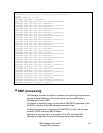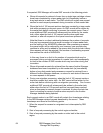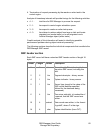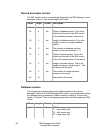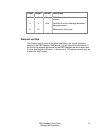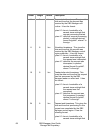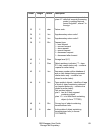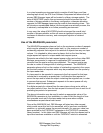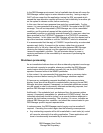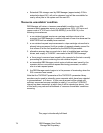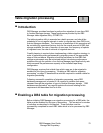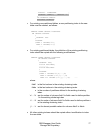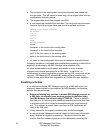DB2 Manager User Guide 71
StorageTek Proprietary
In a mixed operating environment which consists of both library and free-
standing tape drives, the STK Host Software Component will ensure that all
primary DB2 Manager tapes will be located in a library storage module. The
value of MAXTRDR used in this environment should not exceed the total
number of drives available in the library configuration, otherwise allocation
requests for DB2 Manager tapes may be made to free-standing drives. This
will introduce unpredictable delays into the migrate row retrieval process; this
is obviously unacceptable in an online processing environment.
In any case, the value of MAXTRDR should not exceed the overall total
number of drives available, as this will cause a significant increase in the
incidence of allocation recovery, and consequent rejection of retrieval
requests.
Use of the MAXQLEN parameter
The MAXQLEN parameter places a limit on the maximum number of requests
which may be queued for a tape reader task (i.e.) the maximum number of
outstanding requests that may exist for retrieval of objects from any one tape
volume. It is intended to allow users to place a limit on the time that any
single request will spend in a tape reader task request queue.
Requests are added to the task request queue as they arrive from other DB2
Manager components (in response to application SQL commands) and
removed from the queue as they are completed. The request queue may
thus be in a state of change while it is being processed. The MAXQLEN
parameter places a limit on the number of outstanding requests in the queue,
not the total number of requests which may be processed from the queue by
the tape reader task.
If a tape needs to be mounted in response to the first request for that tape
volume that is received by a reader task, it will take the time required to
mount the tape and to locate the object containing the migrated row, in order
to process that request. Subsequent requests in the same queue will only
require an object locate operation.
If multiple requests for retrieval from the same tape volume arrive within a
very short period of time, then the last request to arrive will have to wait for all
preceding requests to be processed.
The above information may be used to select an appropriate value of the
MAXQLEN parameter at your installation, in order to limit the length of time
that a request must wait in the tape reader task queue when multiple
simultaneous requests have been issued.
Once at the MAXQLEN limit, DB2 Manager will reject any other request
which would cause this limit to be exceeded, with a ‘resource unavailable’
condition, or optionally queue the request internally (if a non-zero value has
been specified for the TAPEWAIT parameter in the TAPECNTL parameter
library member). In this latter case DB2 Manager will retry the request until a
tape drive becomes available or until the TAPEWAIT interval is exceeded.



